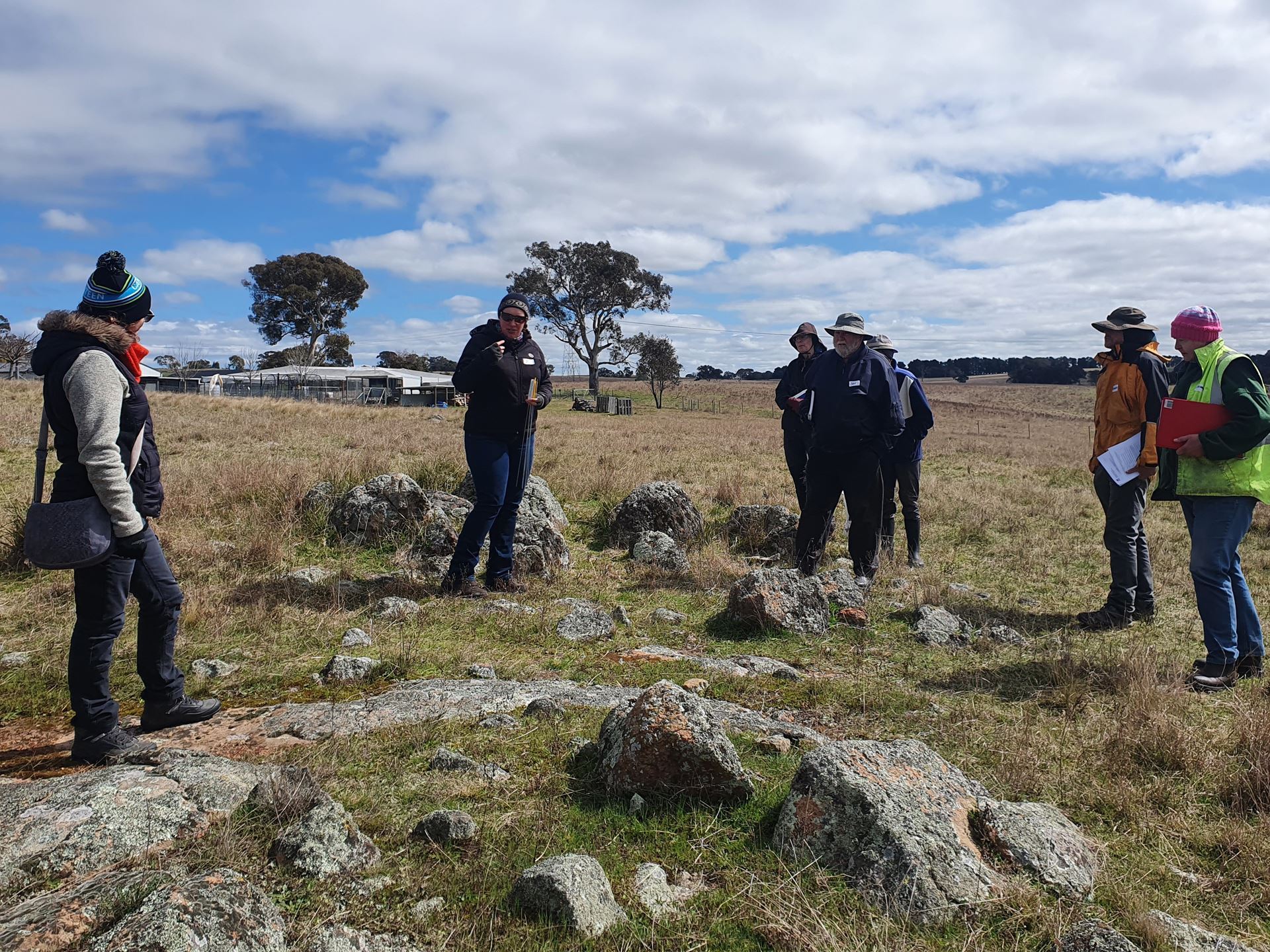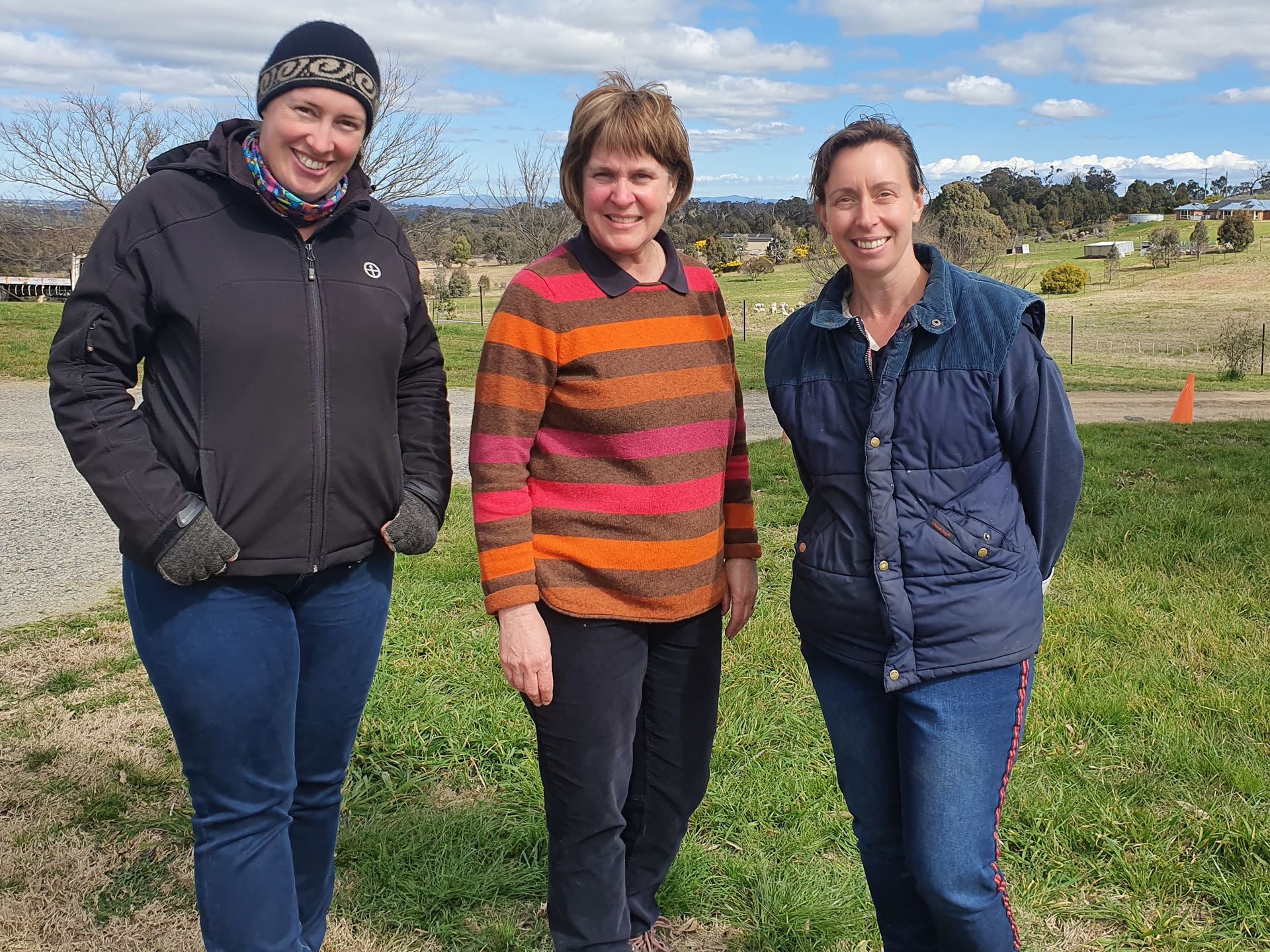This event was a combined webinar and paddock walk in early September 2022 with Jo Powells and Fiona Leech, Agricultural Advisors from South-East Local Land Services.
The topics discussed in the webinar include:
- How native pastures respond to fertilisers and lime, and how fertiliser inputs impact species composition
- Common native grasses and how to manipulate species composition through grazing management and fertiliser
- The common myths about native pasture such as ‘fertilisers kill native pasture’ and ‘fertiliser reduces native plant biodiversity’.
You can watch the webinar here.
The paddock walk was an opportunity for landholders to practice their plant identification skills and look at the grazing values of some of the main pasture species in the Yass area.

These are the main points from the event:
1. Native and introduced perennial grasses can be divided into groups depending on their main growing season. The main groups are temperate (e.g. some Spear grasses, Phalaris, Yorkshire fog grass), tropical (e.g. Kangaroo grass, Red grass and Wire grass) and year-long green perennial grasses (e.g. Weeping grass, Wallaby grasses, Poa, some Speargrass species, some Cocksfoot cultivars, some Tall Fescue cultivars). Year-long green grasses respond well to rain in all seasons often providing green feed in summer when temperate species are dormant.
2. Learn what pasture plants you’ve got and consider doing a grazing management course such as PROGRAZE. Modified native pastures can be manipulated using grazing and fertiliser to increase dry matter production and animal productivity. Seek advice from South East Local Land Services through workshops and reading grazing research trials for your area.
3. Some native grassland ecosystems are protected under threatened species legislation and these high conservation grasslands should be managed for diversity through modified grazing plans and management. If you need advice contact South East Local Land Services or the NSW Biodiversity Conservation Trust.
4. Research has shown that most native grasses respond well to fertiliser and lime application, some species such as Weeping grass, have a particularly high requirement for phosphorus, similar to the level required for Phalaris.
5. Legumes are an important component in native perennial grass pastures. In order to realise a pasture production response it is essential to have a legume present with the native perennial grasses. Subterranean clover is a common introduced legume found in native pastures and usually has been sown into the pasture at some point in the past. However, there are a number of other introduced annual legume species that have become naturalised over time (e.g. Yellow suckling clover, Cluster clover, Hop clover) that are often found naturally occurring in native pastures and also respond well to fertiliser application.
6. Learn to use a land lens to help look at the different parts of grasses and forbs to aid their identification. You can buy cheap hand lenses at JayCar.
A useful publication for the identification of grasses both native and introduced is, ‘Grasses of the NSW tablelands’ NSW DPI publication (2013). It is available from the Tocal College website.

Jo Powells and Fiona Leech with landholder Christine
Resources
Managing native pastures NSWDPI
Native pasture management and delayed grazing
How you can help protect native grasslands
Pasture legumes and their benefit
Laggan grazing demonstration (South-East Local Land Services)
Alternative grazing demonstration (South East Local Land Services)
Grasses of the NSW Tablelands
Threatened ecological communities ACT/NSW
Pasture recovery after bushfire
Prograze course
South-East Local Land Services – Contact us
Grassed up - Guidelines for revegetating with Australian Natives
This event was made possible with funding from the Australian Government through the National Landcare Program and in-kind support from South East Local Land Services.